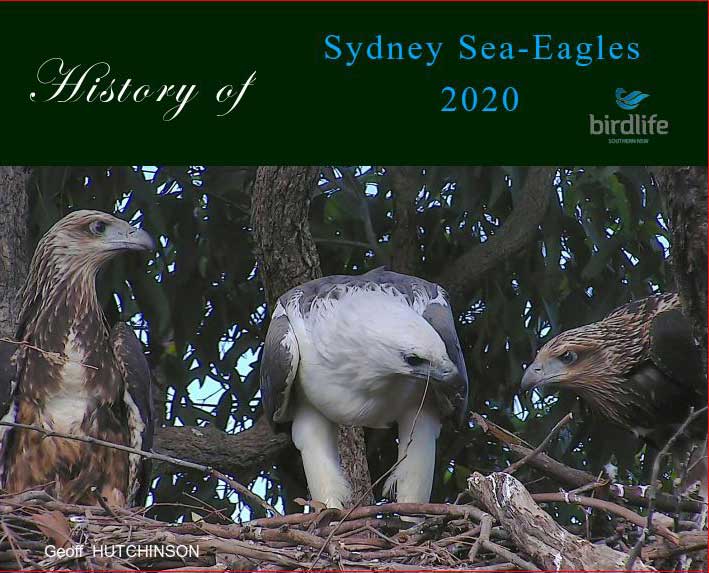Sydney Olympic Park - Sea-Eagles
EagleCAM is a BirdLife Australia, Southern NSW, Research Project.
----------------------------------------------------------------------------------------------
Report on the 2021 nesting of the White-bellied Sea-Eagles
in the Newington Nature Reserve Forest
at Sydney Olympic Park
in the Newington Nature Reserve Forest
at Sydney Olympic Park
Birdlife Australia - Southern NSW
Judy Harrington, Geoff Hutchinson, Jon Irvine.
We acknowledge the essential assistance from the current EagleCAM team - Judy Harrington, Geoff Hutchinson, Bob Oomen and Chris Bruce, for camera installation and maintenance and Shirley McGregor for managing the daily operations.
Special thanks to Dasha, Marsha and Pat, for monitoring nesting observations and Dasha & Helen for camera operations.
Additionally, we also have a wonderful team of volunteers including Facebook admins, chat moderators, ground observers and more (too many to mention here).
Above all, thank you to our Supporters, for funding this project.
Summary:
The breeding pair of eagles renovated the nest used the previous year.
The first egg was laid on June 19. The eagles again delayed incubation until the second egg was laid on June 22. Incubation has been observed in our study to be around 40 days and the first egg hatched 39 days from the lay of the second, after full incubation began. The eggs were laid 80 hours apart and were hatched just over 49 hours apart.
Stephen Debus, in his study of Sea-Eagles breeding in Northern Inland NSW, noted that it has been assumed that there is a strong division of labour, during the breeding season, with the female said to perform most of the nest-based parental behaviour and the male most of the hunting.
Our study has revealed a less obvious division of labour, with the male showing more of the “caring roles” than was believed. Both eagles contributed to nest renovation and shared incubation, though the female alone incubated at night. Both eagles again shared daytime brood duty, though the female was in attendance for longer and she alone brooded the nestlings at night. There was a short period of sibling rivalry at around 4 weeks from hatch. Both adults brought food and fed the nestlings, though the female fed more often and the male brought most prey.
The younger eaglet SE28 branched at 77 days from hatch and SE27 branched at 81 days a few days later. Both eaglets fledged on the same day. SE28 fledged at 83 days and SE27 at 85 days from hatch. After fledging, neither eaglet returned to the nest nor were seen being fed by the adults. SE28 has not been seen in the area and its survival is not confirmed. SE27 was taken into care at Taronga Wildlife Hospital, after being found in a weak state. She was released, then after another session in care, was taken to Raptor Care Australia for rehabilitation. To monitor her progress after her eventual release, SE27 was fitted with a tail-mounted solar-powered satellite tracker by ARCC Inc

